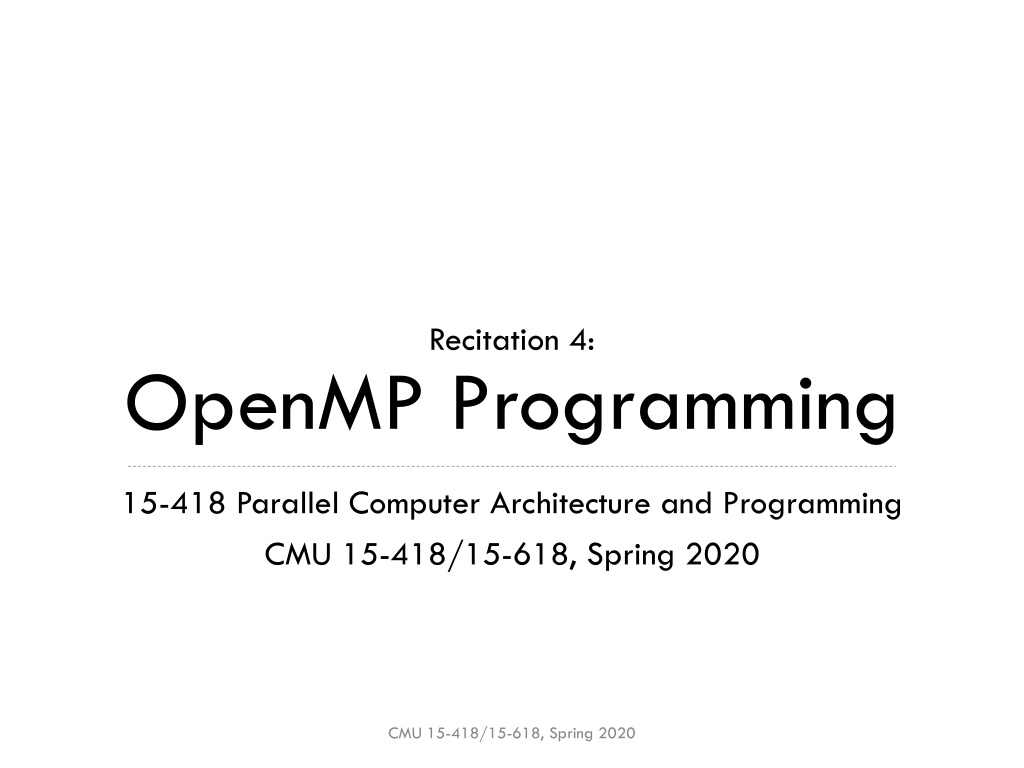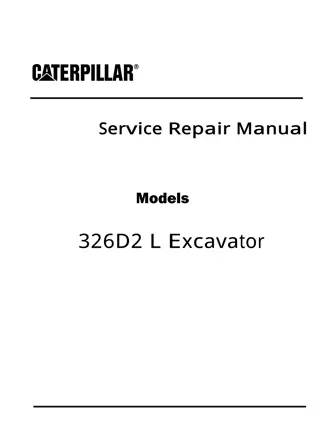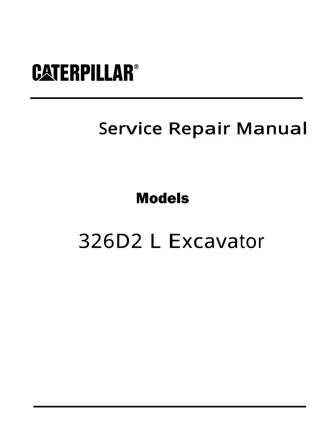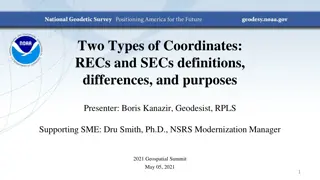
Advanced Parallel Computing Techniques with OpenMP
Learn to efficiently implement matrix-vector multiplication using OpenMP for parallel computing, utilizing sparse matrix formats and comparing different parallel computing strategies to optimize performance. The content covers C++ code implementations, thread parallelism with OpenMP, and recruiting multiple threads for parallel processing. Gain insights into utilizing OpenMP features effectively in programming for enhanced performance in parallel computer architecture.
Download Presentation

Please find below an Image/Link to download the presentation.
The content on the website is provided AS IS for your information and personal use only. It may not be sold, licensed, or shared on other websites without obtaining consent from the author. If you encounter any issues during the download, it is possible that the publisher has removed the file from their server.
You are allowed to download the files provided on this website for personal or commercial use, subject to the condition that they are used lawfully. All files are the property of their respective owners.
The content on the website is provided AS IS for your information and personal use only. It may not be sold, licensed, or shared on other websites without obtaining consent from the author.
E N D
Presentation Transcript
Recitation 4: OpenMP Programming 15-418 Parallel Computer Architecture and Programming CMU 15-418/15-618, Spring 2020 CMU 15-418/15-618, Spring 2020
Goals for today Learn to use Open MP 1. Sparse matrix-vector code Understand CSR sparse matrix format Simplest OpenMP features 2. Compare different parallel computing strategies Find ways that work for irregular matrices 3. Code available in: /afs/cs.cmu.edu/academic/class/15418-s20/www/code/rec04/mvmul CMU 15-418/15-618, Spring 2020
Today: Matrix-vector multiplication ? (?,?) ? ? C A B ? ? ? 1 (? 1) output vector Output = dot-products of rows from A and the vector B CMU 15-418/15-618, Spring 2020
Matrix-vector multiplication Simple C++ implementation: /* Find element based on row-major ordering */ #define RM(r, c, width) ((r) * (width) + (c)) void matrixVectorProduct(int N, float *matA, float *vecB, float *vecC) { for (int i = 0; i < N; i++) float sum = 0.0; for (int k = 0; k < N; k++) sum += matA[RM(i,k,N)] * vecB[k]; vecC[i] = sum; } } CMU 15-418/15-618, Spring 2020
Matrix-vector multiplication Our code is slightly refactored: typedef float data_t; typedef unsigned index_t; float rvp_dense_seq(dense_t *m, vec_t *x, index_t r) { index_t nrow = m->nrow; index_t rstart = r*nrow; data_t val = 0.0; for (index_t c = 0; c < nrow; c++) val += x->value[c] * m->value[rstart+c]; return val; } Row dot product (the inner loop over ? in original code) void mvp_dense_seq(dense_t *m, vec_t *x, vec_t *y, rvp_dense_t rp_fun) { index_t nrow = m->nrow; for (index_t r = 0; r < nrow; r++) { y->value[r] = rp_fun(m, x, r); } } The outer loop over rows (over ? in original code) CMU 15-418/15-618, Spring 2020
Thread parallelism with OpenMP OpenMP is supported by gcc Write standard C/C++ code Decorate your code with #pragmas We will cover only some of OpenMP s features CMU 15-418/15-618, Spring 2020
Parallel Outer Loop void mvp_dense_mps(dense_t *m, vec_t *x, vec_t *y, rvp_dense_t rp_fun) { index_t nrow = m->nrow; #pragma omp parallel for schedule(static) for (index_t r = 0; r < nrow; r++) { y->value[r] = rp_fun(m, x, r); } } Recruit multiple threads Have each do subrange of row indices CMU 15-418/15-618, Spring 2020
Understanding Parallel Outer Loop void mvp_dense_mps_impl(dense_t *m, vec_t *x, vec_t *y, rvp_dense_t rp_fun) { index_t nrow = m->nrow; #pragma omp parallel { // Following code executed by each thread index_t t = omp_get_thread_num(); index_t tcount = omp_get_num_threads(); index_t delta = (nrow+tcount-1)/tcount; index_t rstart = t * delta; index_t rend = (t+1) * delta; if (rend > nrow) rend = nrow; for (index_t r = rstart; r < rend; r++) { y->value[r] = rp_fun(m, x, r); } } } Each thread t does its range of rows Activate tcount threads Partition range into blocks of size delta Assign separate block to each thread CMU 15-418/15-618, Spring 2020
Parallel Inner Loop data_t rvp_dense_mpr(dense_t *m, vec_t *x, index_t r) { index_t nrow = m->nrow; index_t rstart = r*nrow; data_t val = 0.0; #pragma omp parallel for reduction(+:val) Partition range into blocks of size delta for (index_t c = 0; c < nrow; c++) { data_t mval = m->value[rstart+c]; data_t xval = x->value[c]; val += mval * xval; } return val; } Each thread accumulates its subrange of values Combine values across threads Recruit multiple threads Accumulate separate copies of val and combine CMU 15-418/15-618, Spring 2020
Benchmarking dense mat-vec Matrix: 256 x 256 (65,536 entries) Sequential: Parallel Rows: Parallel Columns: 4.90 GF Tasks are too fine-grained 2.48 GF 15.43 GF (6.22 X) (1.98 X) CMU 15-418/15-618, Spring 2020
Sparse matrix-vector multiplication What if A is mostly zeroes? (This is common) ? (?,?) ? ? C A B Idea: We should only compute on non-zeros in A Need new sparse matrix representation CMU 15-418/15-618, Spring 2020
Compressed sparse-row (CSR) matrix format Row Dense matrix: CSR matrix: CMU 15-418/15-618, Spring 2020
Compressed sparse-row (CSR) matrix format Row Dense matrix: 6 1 1 2 9 2 4 3 CSR matrix: CMU 15-418/15-618, Spring 2020
Compressed sparse-row (CSR) matrix format Row Dense matrix: 6 1 1 2 9 2 4 3 CSR matrix: Values: (Compact non-zeroes into dense format) 6 2 4 1 2 9 3 1 CMU 15-418/15-618, Spring 2020
Compressed sparse-row (CSR) matrix format Row Dense matrix: 6 1 1 2 9 2 4 3 CSR matrix: Values: 6 2 4 1 2 9 3 1 Indices: 1 (Position corresponding to each value) CMU 15-418/15-618, Spring 2020
Compressed sparse-row (CSR) matrix format Row Dense matrix: 6 1 1 2 9 2 4 3 CSR matrix: Values: 6 2 4 1 2 9 3 1 Indices: 1 5 (Position corresponding to each value) CMU 15-418/15-618, Spring 2020
Compressed sparse-row (CSR) matrix format Row Dense matrix: 6 1 1 2 9 2 4 3 CSR matrix: Values: 6 2 4 1 2 9 3 1 Indices: 1 5 0 (Position corresponding to each value) CMU 15-418/15-618, Spring 2020
Compressed sparse-row (CSR) matrix format Row Dense matrix: 6 1 1 2 9 2 4 3 CSR matrix: Values: 6 2 4 1 2 9 3 1 Indices: 1 5 0 3 (Position corresponding to each value) CMU 15-418/15-618, Spring 2020
Compressed sparse-row (CSR) matrix format Row Dense matrix: 6 1 1 2 9 2 4 3 CSR matrix: Values: 6 2 4 1 2 9 3 1 Indices: 1 5 0 3 7 4 1 6 (Position corresponding to each value) CMU 15-418/15-618, Spring 2020
Compressed sparse-row (CSR) matrix format Row Dense matrix: 6 1 1 2 9 2 4 3 CSR matrix: Values: 6 2 4 1 2 9 3 1 Indices: 1 5 0 3 7 4 1 6 Offsets: (Where each row starts) CMU 15-418/15-618, Spring 2020
Compressed sparse-row (CSR) matrix format Row Dense matrix: 6 1 1 2 9 2 4 3 CSR matrix: Values: 6 2 4 1 2 9 3 1 Indices: 1 5 0 3 7 4 1 6 Offsets: 0 (Where each row starts) CMU 15-418/15-618, Spring 2020
Compressed sparse-row (CSR) matrix format Row Dense matrix: 6 1 1 2 9 2 4 3 CSR matrix: Values: 6 2 4 1 2 9 3 1 Indices: 1 5 0 3 7 4 1 6 Offsets: 0 2 (Where each row starts) CMU 15-418/15-618, Spring 2020
Compressed sparse-row (CSR) matrix format Row Dense matrix: 6 1 1 2 9 2 4 3 CSR matrix: Values: 6 2 4 1 2 9 3 1 Indices: 1 5 0 3 7 4 1 6 Offsets: (Where each row starts) 0 2 5 CMU 15-418/15-618, Spring 2020
Compressed sparse-row (CSR) matrix format Row Dense matrix: 6 1 1 2 9 2 4 3 CSR matrix: Values: 6 2 4 1 2 9 3 1 Indices: 1 5 0 3 7 4 1 6 Offsets: (Where each row starts) 0 2 5 6 CMU 15-418/15-618, Spring 2020
Compressed sparse-row (CSR) matrix format Row Dense matrix: 6 1 1 2 9 2 4 3 CSR matrix: Values: 6 2 4 1 2 9 3 1 Indices: 1 5 0 3 7 4 1 6 Offsets: (Where each row starts) 0 2 5 6 8 CMU 15-418/15-618, Spring 2020
Compressed sparse-row (CSR) matrix format Row Dense matrix: 6 1 1 2 9 2 4 3 CSR matrix: Values: (Compact non-zeroes into dense format) 6 2 4 1 2 9 3 1 Indices: (Position corresponding to each value) 1 5 0 3 7 4 1 6 Offsets: (Where each row starts) 0 2 5 6 8 CMU 15-418/15-618, Spring 2020
Sparse matrix-vector multiplication data_t rvp_csr_seq(csr_t *m, vec_t *x, index_t r) { index_t idxmin = m->rowstart[r]; index_t idxmax = m->rowstart[r+1]; data_t val = 0.0; for (index_t idx = idxmin; idx < idxmax; idx++) { index_t c = m->cindex[idx]; data_t mval = m->value[idx]; data_t xval = x->value[c]; val += mval * xval; } return val; } Row dot product (the inner loop over ? in original code) Iterate over nonzero values in row /* the outer loop (across rows) doesn t change */ void mvp_csr_seq(csr_t *m, vec_t *x, vec_t *y, rvp_csr_t rp_fun) { index_t nrow = m->nrow; for (index_t r = 0; r < nrow; r++) { y->value[r] = rp_fun(m, x, r); } } CMU 15-418/15-618, Spring 2020
Benchmarking sparse mat-vec Uniform Matrix: 16384 x 16384 (65,536 nonzero entries) Each row contains exactly nnz/nrow = 4 nonzero elements Sequential: 2.45 GF Parallel Rows: 13.87 GF Parallel Columns: 0.01 GF Only 4 nonzero elements / row (5.66 X) (Oops) CMU 15-418/15-618, Spring 2020
Benchmarking sparse mat-vec Skewed Matrix: 16384 x 16384 (65,536 nonzero entries) All nonzeros in first nnz/nrow = 4 rows Sequential: 1.56 GF Parallel Rows: 2.07 GF Parallel Columns: 0.11 GF Still too fine-grained (1.33 X) (Oops, but better than before!) CMU 15-418/15-618, Spring 2020
A Data-Oriented Strategy Run in parallel over all nonzero entries Have each product update the appropriate row value CMU 15-418/15-618, Spring 2020
Compressed sparse-row (CSR) matrix format #2 Row Dense matrix: 6 1 1 2 9 2 4 3 CSR matrix: Values: (Compact non-zeroes into dense format) 6 2 4 1 2 9 3 1 Column Indices: (Column corresponding to each value) 1 5 0 3 7 4 1 6 Row Indices: (Row corresponding to each value) 0 0 1 1 1 2 3 3 CMU 15-418/15-618, Spring 2020
Data-oriented matrix-vector multiplication (atomic) void full_mvp_csr_atomic(csr_t *m, vec_t *x, vec_t *y) { index_t nnz = m->nnz; zero_vector(y); #pragma omp parallel for for (index_t idx = 0; idx < nnz; idx++) { data_t mval = m->value[idx]; index_t r = m->rindex[idx]; index_t c = m->cindex[idx]; data_t xval = x->value[c]; data_t prod = mval * xval; Partition all nonzero data into blocks Each thread accumulates partial products for a block Must use atomic addition to avoid races #pragma omp atomic y->value[r] += prod; } } Require atomic updating of each value of y CMU 15-418/15-618, Spring 2020
Benchmarking sparse mat-vec Skewed Matrix: 16384 x 16384 (65,536 nonzero entries) All nonzeros in first nnz/nrow = 4 rows Sequential: 1.56 GF Parallel Rows: 2.07 GF Parallel Columns: 0.11 GF Still too fine-grained Data par, atomic 0.05 GF Atomic updating is expensive! (1.33 X) (Oops) (Oops) CMU 15-418/15-618, Spring 2020
Data-oriented matrix-vector multiplication (separate accums) Strategy (T = number of threads) Have T separate vectors Parallel over nonzero data: Each thread zeros its vector Each thread accumulates results in own vector Parallel over rows: Sum vector values for each row Properties No need for synchronization Extra space and work CMU 15-418/15-618, Spring 2020
Data-oriented matrix-vector multiplication (separate accums) void full_mvp_csr_basic(csr_t *m, vec_t *x, vec_t *y) { index_t nrow = m->nrow; index_t nnz = m->nnz; #pragma omp parallel { index_t tid = omp_get_thread_num(); index_t tcount = omp_get_num_threads(); vec_t *svec = scratch_vector[tid]; zero_vector(svec); #pragma omp for for (index_t idx = 0; idx < nnz; idx++) { data_t mval = m->value[idx]; index_t r = m->rindex[idx]; index_t c = m->cindex[idx]; data_t xval = x->value[c]; data_t prod = mval * xval; svec->value[r] += prod; } #pragma omp for for (index_t r = 0; r < nrow; r++) { data_t val = 0.0; for (index_t t = 0; t < tcount; t++) val += scratch_vector[t]->value[r]; y->value[r] = val; } } } Scratch vectors allocated at startup Partition all nonzero data into blocks Each thread accumulates partial products for block in separate vector Recruit threads to sum values in the T different vectors CMU 15-418/15-618, Spring 2020
Benchmarking sparse mat-vec Skewed Matrix: 16384 x 16384 (65,536 nonzero entries) All nonzeros in first nnz/nrow = 4 rows Sequential: 1.56 GF Parallel Rows: 2.07 GF Parallel Columns: 0.11 GF Still too fine-grained Data par, atomic 0.05 GF Atomic updating is expensive! Data par, sep. 3.65 GF (1.33 X) (Oops) (Oops) (2.34 X) CMU 15-418/15-618, Spring 2020
Data-oriented matrix-vector multiplication (separate accums) Observation: Accumulating in memory is more expensive than in registers val += prod; // Fast svec->value[r] += prod; // Slow Data will have long runs with same row Accumulate in register until row changes CMU 15-418/15-618, Spring 2020
Data-oriented matrix-vector multiplication (register accum) index_t tid = omp_get_thread_num(); index_t tcount = omp_get_num_threads(); vec_t *svec = scratch_vector[tid]; zero_vector(svec); data_t val = 0.0; index_t last_r = 0; #pragma omp for nowait for (index_t idx = 0; idx < nnz; idx++) { data_t mval = m->value[idx]; index_t r = m->rindex[idx]; index_t c = m->cindex[idx]; data_t xval = x->value[c]; data_t prod = mval * xval; if (r == last_r) { val += prod; } else { svec->value[last_r] = val; last_r = r; val = prod; } } svec->value[last_r] = val; #pragma omp barrier Eliminate implicit barrier, since we re inserting explicit one Partition all nonzero data into blocks Each thread accumulates partial products in register Store value to separate vector when change rows Must store final row value Explicit barrier synch required CMU 15-418/15-618, Spring 2020
Benchmarking sparse mat-vec Skewed Matrix: 16384 x 16384 (65,536 nonzero entries) All nonzeros in first nnz/nrow = 4 rows Sequential: 1.56 GF Parallel Rows: 2.07 GF Parallel Columns: 0.11 GF Still too fine-grained Data par, atomic 0.05 GF Atomic updating is expensive! Data par, sep. 3.65 GF Data par, reg acc 4.64 GF (1.33 X) (Oops) (Oops) (2.34 X) (2.97 X) CMU 15-418/15-618, Spring 2020
Another use for accumulating in registers Combine register updating with atomic updating Accumulate values in register When write to memory, do so by atomic addition to row in y CMU 15-418/15-618, Spring 2020
Data-oriented matrix-vector multiplication (register accum, atomic updates) void full_mvp_csr_opt_atomic(csr_t *m, vec_t *x, vec_t *y) { index_t nnz = m->nnz; zero_vector(y); #pragma omp parallel { data_t val = 0.0; index_t last_r = 0; #pragma omp for nowait for (index_t idx = 0; idx < nnz; idx++) { data_t mval = m->value[idx]; index_t r = m->rindex[idx]; index_t c = m->cindex[idx]; data_t xval = x->value[c]; data_t prod = mval * xval; if (r == last_r) { val += prod; } else { #pragma omp atomic y->value[last_r] += val; last_r = r; val = prod; } } #pragma omp atomic y->value[last_r] += val; } } Need to explicitly zero-out destination vector Eliminate implicit barrier, since implicit one at end of omp parallel Partition all nonzero data into blocks Each thread accumulates partial products in register Atomically add value to destination vector when change rows Must add final row value CMU 15-418/15-618, Spring 2020
Benchmarking sparse mat-vec Skewed Matrix: 16384 x 16384 (65,536 nonzero entries) All nonzeros in first nnz/nrow = 4 rows Sequential: 1.56 GF Parallel Rows: 2.07 GF Parallel Columns: 0.11 GF Still too fine-grained Data par, atomic 0.05 GF Atomic updating is expensive! Data par, sep. 3.65 GF Data par, reg acc 4.64 GF Data par, reg atom 9.99 GF (1.33 X) (Oops) (Oops) (2.34 X) (2.97 X) (6.40 X) CMU 15-418/15-618, Spring 2020
Benchmarking sparse mat-vec Uniform Matrix: 16384 x 16384 (65,536 nonzero entries) nnz/nrow = 4 nonzero entries/row Sequential: 2.45 GF Parallel Rows: 13.87 GF Parallel Columns: 0.01 GF Still too fine-grained Data par, atomic 1.76 GF Atomic updating is expensive! Data par, sep. 5.46 GF Data par, reg acc 5.79 GF Data par, reg atom 5.06 GF (5.66 X) (Oops) (Oops) (2.29 X) (2.36 X) (2.07 X) CMU 15-418/15-618, Spring 2020
Some Observations Parallel performance more sensitive to data characteristics than sequential Sequential 1.56 2.48 GF Parallel 5.11 15.43 GF Easy to get parallelism out of highly structured data Dense matrices Sparse but regular But, if data sparse & irregular, need to find technique that is effective Need to try different approaches CMU 15-418/15-618, Spring 2020
Common Mistake #1 void mvp_dense_mps_impl(dense_t *m, vec_t *x, vec_t *y, rvp_dense_t rp_fun) { index_t nrow = m->nrow; index_t t, tcount, delta, rstart, rend; #pragma omp parallel { // Following code executed by each thread t = omp_get_thread_num(); tcount = omp_get_num_threads(); delta = (nrow+tcount-1)/tcount; rstart = t * delta; rend = (t+1) * delta; if (rend > nrow) rend = nrow; for (index_t r = rstart; r < rend; r++) { y->value[r] = rp_fun(m, x, r); } } } Variables outside of parallel are global Either wrong answers or poor performance Variables declared outside scope of omp parallel are global to all threads CMU 15-418/15-618, Spring 2020
Common Mistake #2 data_t rvp_dense_mpr(dense_t *m, vec_t *x, index_t r) { index_t nrow = m->nrow; index_t idx = r*nrow; data_t val = 0.0; #pragma omp parallel for reduction(+:val) for (index_t c = 0; c < nrow; c++) { data_t mval = m->value[idx++]; data_t xval = x->value[c]; val += mval * xval; } return val; } Sequential version stepped through matrix values sequentially But, that s not true for parallel version Low-level optimization can often introduce sequential dependency CMU 15-418/15-618, Spring 2020
Common Mistake #3 void full_mvp_csr_allocate(csr_t *m, vec_t *x, vec_t *y) { index_t nrow = m->nrow; index_t nnz = m->nnz; // Allocate new scratch vectors vec_t *scratch_vector[MAXTHREAD]; #pragma omp parallel { index_t t = omp_get_thread_num(); index_t tcount = omp_get_num_threads(); scratch_vector[t] = new_vector(nrow); . . . Allocate all data structures beforehand Typical computation uses them repeatedly Scratch vectors allocated every time multiplication performed CMU 15-418/15-618, Spring 2020
Relation to Assignment 3 Graphs 28,800 nodes 171,400 286,780 edges Degrees 5 4,899 Similar to sparse, irregular matrix Properties Cannot assume FP arithmetic is associative Limits combining strategies Integer addition is associate Counting rats CMU 15-418/15-618, Spring 2020






















